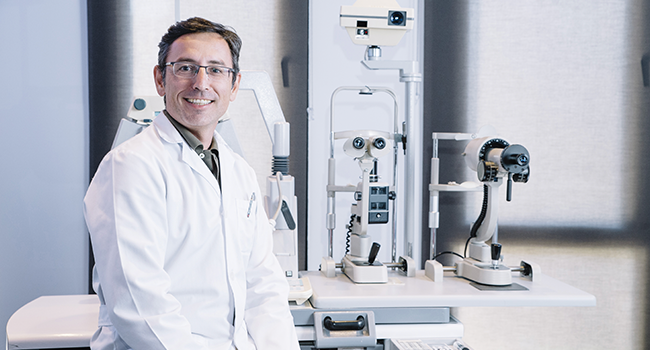The Value of Regular Exams with an Eye Doctor Optometrist
The Value of Regular Exams with an Eye Doctor Optometrist
Blog Article
Discovering the most up to date Technological Developments in Optometry and What They Mean for Optometrists
From the accuracy of Optical Coherence Tomography to the nuanced understandings provided by AI-driven analysis devices, these developments are establishing new criteria in client analysis and treatment. As these developments penetrate the technique, eye doctors are encountered with the difficulty of welcoming these tools to boost individual end results.
Technologies in Diagnostic Devices
Progressing the area of optometry, advancements in analysis devices have changed the means eye care professionals evaluate and diagnose ocular problems and visual disabilities. The previous years has seen considerable technological improvements, enabling more precise and detailed assessments. Optical Coherence Tomography (OCT), for example, supplies high-resolution cross-sectional pictures of the retina, enabling for the very early discovery of conditions such as glaucoma and age-related macular deterioration. This non-invasive imaging method has actually come to be essential in contemporary optometric technique.
An additional key technology is the intro of sophisticated corneal topography systems, which map the surface area curvature of the cornea with precision. These devices are especially useful for fitting get in touch with lenses and identifying corneal problems. Electronic retinal imaging has actually changed standard ophthalmoscopy, using detailed, scenic views of the retina that promote detailed aesthetic exams.
The development of wavefront aberrometry has actually also been essential, making it possible for the evaluation of refractive mistakes with unmatched accuracy (Optometrist Chino). This technology aids in customizing restorative lenses and improving medical end results for refractive surgeries. Collectively, these analysis innovations empower optometrists to supply premium client care, ensuring early treatment and customized therapy techniques, eventually enhancing visual health and wellness results
AI in Patient Monitoring
Building on the foundation of cutting-edge diagnostic tools, the incorporation of man-made knowledge (AI) in person monitoring represents a transformative leap for optometry. AI systems are significantly employed to enhance efficiency, accuracy, and personalization in patient treatment. By examining vast quantities of information, AI can determine patterns and predict possible ocular conditions, making it possible for eye doctors to tailor interventions better. This capacity is critical in managing chronic eye illness such as glaucoma and diabetic person retinopathy, where very early detection and continual monitoring are key.
Additionally, AI-driven platforms promote structured person communications and administrative processes. Automated scheduling, online assessments, and individualized follow-up plans not just boost person contentment but also optimize time monitoring for professionals. These systems can triage individuals based on the necessity of their conditions, making sure that those in vital need get timely interest.
In addition, AI enhances decision-making by providing optometrists with evidence-based referrals and therapy paths. By incorporating data from digital health records, AI devices use insights that inform medical choices, minimizing the danger of errors and boosting patient end results. As AI remains to develop, its role in client monitoring will likely broaden, improving the landscape of optometric care.
Advances in Retinal Imaging
In the world of optometry, retinal imaging has actually witnessed remarkable technical advancements that are boosting analysis capacities and client care. Developments such as Optical Comprehensibility Tomography (OCT) and fundus digital photography have actually reinvented just how eye doctors imagine and analyze the retina. OCT, specifically, supplies high-resolution, cross-sectional photos of the retina, enabling the thorough exam of its layers. This ability is very useful for early discovery and administration of conditions like glaucoma, diabetic person retinopathy, and age-related macular deterioration.
Enhanced imaging techniques like OCT angiography are further refining analysis precision. This non-invasive method maps blood flow in the retina, offering critical understandings right into vascular health without the requirement for color shots. Furthermore, adaptive optics innovation is being integrated into retinal imaging systems to remedy eye aberrations, delivering unmatched picture clarity. Such innovations promote the recognition of min retinal modifications that could represent condition progression.
Furthermore, developments in synthetic knowledge are augmenting retinal imaging by allowing computerized analysis of large datasets. These systems aid optometrists in determining patterns a sign of pathology, thereby enhancing analysis accuracy and performance. Collectively, these have a peek at these guys technologies are changing retinal imaging into a foundation of modern-day eye care, improving results and broadening therapeutic opportunities.
Teleoptometry's Growing Function
Teleoptometry is progressively ending up being an essential part of eye treatment, driven by innovations in data and diagnostic tools. As optometry embraces electronic change, teleoptometry helps with remote appointments, permitting optometrists to extend their solutions past typical boundaries. This is particularly useful in underserved and country areas where accessibility to specialized eye care is typically restricted. By leveraging high-resolution video conferencing and advanced retinal imaging, eye doctors can perform detailed eye exams from afar, making sure timely diagnosis and therapy.
The combination of artificial knowledge (AI) more boosts teleoptometry, allowing the evaluation of aesthetic data and assisting in the detection of ocular problems such as glaucoma and diabetic retinopathy. AI-powered algorithms can quickly analyze complicated imaging data, giving eye doctors with beneficial understandings that strengthen medical decision-making.
Moreover, teleoptometry supports continuity of care via seamless assimilation with digital wellness records (EHRs), permitting eye doctors to maintain detailed patient backgrounds. When seeking advice from with various experts., this makes certain that individuals obtain tailored and constant care also.
Regardless of these benefits, challenges stay, consisting of guaranteeing information safety and handling individual assumptions. However, teleoptometry represents a significant stride towards more accessible, effective, and patient-centered eye care. As technology advances, its role is poised to expand further.

Future Fads in Eye Treatment
A myriad of ingenious trends is established to improve the future of eye care, driven by technical innovations and the developing needs of individuals. One considerable pattern is the integration of synthetic knowledge (AI) in diagnostics, which promises to improve the accuracy and performance of eye exams. AI algorithms can analyze large amounts of information from retinal pictures, possibly discovering problems like diabetic retinopathy and glaucoma earlier than conventional techniques.
Additionally, individualized medicine is gaining grip in optometry, with hereditary testing educating customized therapy plans. This approach intends to optimize client results by tailoring interventions to specific hereditary accounts. Wearable technology, such as smart contact lenses, is likewise on the perspective, supplying real-time surveillance of intraocular pressure or sugar degrees, thus offering constant insights right into systemic and eye health.
The fostering of enhanced truth (AR) and digital reality (VIRTUAL REALITY) in training and patient education is another emerging fad. These modern technologies offer immersive experiences that can enhance understanding and abilities both for patients and optometrists. As these patterns develop, eye doctors have to stay abreast of technological developments to supply innovative care, ensuring enhanced individual outcomes and complete satisfaction in the dynamic landscape of eye treatment.
Final Thought

Jointly, these diagnostic improvements equip optometrists to provide superior patient treatment, making sure early treatment and tailored site here therapy techniques, ultimately improving aesthetic wellness results.

As these technologies proceed to progress, eye doctors should adjust and include them into method, inevitably maximizing process efficiency and elevating the criterion of eye care provided to patients.
Report this page